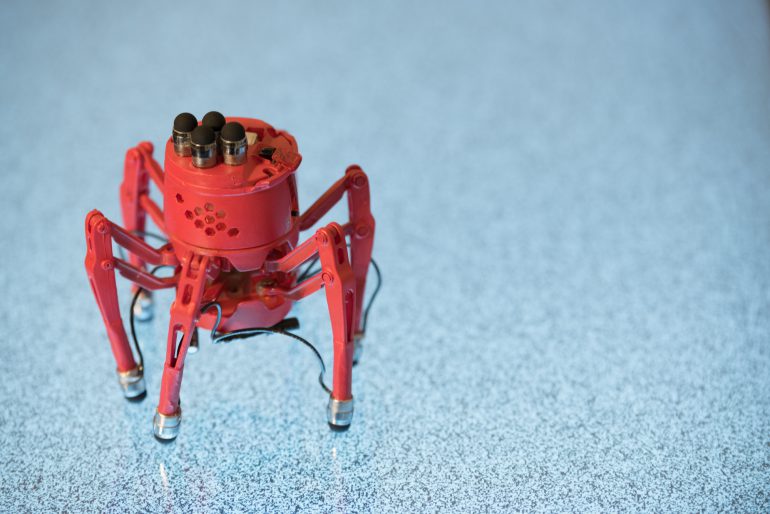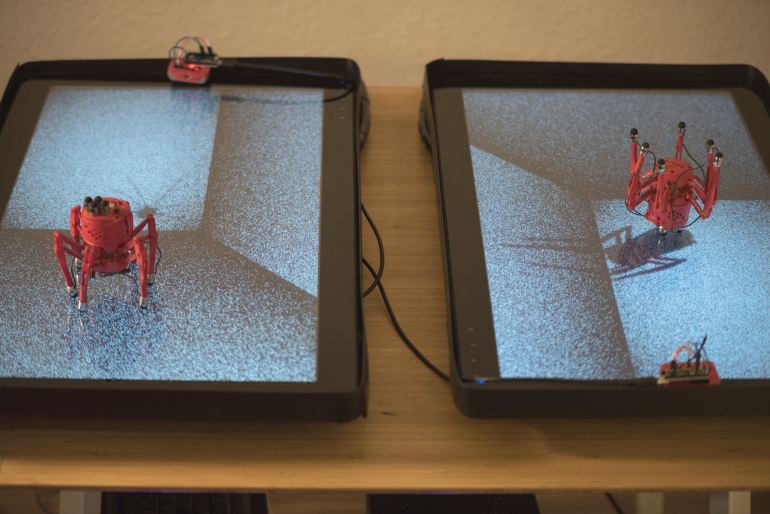
The present research is an artistic investigation of machines as players. Even though machines cannot play in the same terms as humans, they can make the audience believe they can, trough role-play. When machines play, the viewers often perceive them as living and conscious entities, while simultaneously aware that these lifelike features are not real, and that machines are only ‘pretending’ to be living beings. The name of the piece, Robot Ludens, is a reference to the book Homo Ludens, a Study of the Play-Element in Culture, written in 1938 by J. Huizinga, which was the first book extensively dedicated to the study of the activity of play. In this work, other than emphasizing the notion of life in machines, we discuss how death could be played by devices that have never been alive. It presents a diptych with two scenes: machine playing alive, and machines playing dead, which are presented side by side. The work juxtaposes two pairs of spider-like robots and 27″ monitors. The two screens are placed horizontally on top of a table, each hosting a small spider-like robot. The two monitors display the same background image, which depicts the corner of a room, where a 2D character moves around. The virtual characters represent spider’s shadows that walk around and get distorted in the walls. These shadows interact with the robot through the touchscreen interface in the two panels. In one of the panels, the robot is playing alive and walking in an area of the monitor that represents the “floor” of the virtual world. This robot engages with the virtual shadow, which moves around playfully trying to catch the robot. In the second panel, the monitor displays the same virtual environment as in the first, except that it is rotated by 180 degrees. The robot is turned off and lies on its back “playing dead” while its shadow is slowly changing its outline around the inert machines.
The project has been presented at ZKM Open Codes.
Sponsored by Hexagram. ACKNOWLEDGMENT: Dr. Bill Vorn, Dr. Luis Rodrigues and HYCONS lab, Dr. Mia Consalvo, Gavin Kenneally and CAPES

